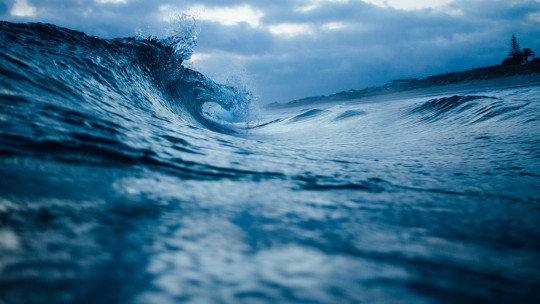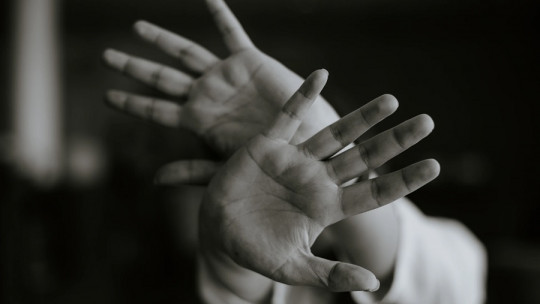There are as many phobias as there are objects or situations in the world There are phobias that are more common than others, and some that are really strange. In this article we bring you cymophobia, which consists of the intense and irrational fear of sea waves.
Water phobia is quite common, since, although it is an element that may be harmless, it can also cause damage or harm (accidents, drowning, etc.). In this article we tell you what cymophobia is and what its symptoms, causes and treatments are.
Cymophobia: the irrational fear of waves
Cymophobia is a specific phobia, that is, an anxiety disorder. It is characterized by an intense, disproportionate and irrational fear of sea waves and wave movements.
Cymophobia is related to other types of similar phobias, such as aquaphobia (fear of water), bathophobia (fear of depths), thalassophobia (fear of large bodies of water) and ablutophobia (intense fear of water). daily cleaning).
While it is true that the phobia of water is a fairly common phobia (especially in childhood), the phobia of waves is less common. You could say that cymophobia is a variant of the phobia of water
This fear of sea waves can be explained by the even more internal fear of being devoured by one of them (for example while surfing, or in “normal” situations of bathing in the sea).
The fear of water
As we said, water phobia is a fairly common phobia, especially among children. In reality, it is not so “strange” to suffer from a phobia of water, since it is a stimulus that can be threatening, or that can cause damage (think of drowning, for example).
Furthermore, in the news it is very common to hear news of people drowning on beaches and in swimming pools (especially small children).
In the case of cymophobia, the fear occurs in water as an environmental element (i.e. sea water, for example). Specifically, fear occurs when faced with ocean waves. It is curious because water is an element that can arouse both fascination, curiosity and admiration, as well as fear.
Symptoms
The symptoms of cymophobia are the same as those of a specific phobia. The ones we propose are found in the DSM-5 (in the diagnostic criteria for a specific phobia). Let’s see them in detail.
1. Intense fear of waves
The main symptom is a fear, anxiety or intense fear of the possibility of seeing or “touching” waves The waves and their undulating movements awaken this fear, which also translates into physical symptoms (tachycardia, sweating, tension, dizziness, nausea, hyperarousal, etc.). and psychological (irrational ideas associated with waves).
2. Interference
In order to diagnose cymophobia as such, this fear associated with the phobia must interfere with the individual’s life. That is, the person’s daily life is affected by said fear. This translates, for example, into stop making plans that involve seeing ocean waves (avoidance)
3. Avoidance
Thus, in cymophobia the person avoids the stimulus that triggers their anxiety: the waves This implies that you stop going to the beach even though you may feel like it, and that if you have to expose yourself to the stimulus, you resist it with high anxiety.
4. Duration of 6 months
In order to be diagnosed with cymophobia, as in all specific phobias, the duration of symptoms is required to last at least 6 months
Causes
The causes of cymophobia can be diverse. Let’s see the most frequent ones below.
1. Traumatic experiences with waves
One of the most likely causes of cymophobia is the fact that having experienced a traumatic situation with the waves such as: getting hurt by a wave (surfing, for example), having drowned in one, having almost died, etc.
2. Vicarious conditioning
Vicarious conditioning involves seeing other people receiving certain consequences (usually negative) as a result of their actions. In the case of cymophobia, we could think of a lifeguard who sees people every day who are about to drown in the waves, or who simply get hurt by one of them.
Evidently, It is not necessary to be a lifeguard to “learn” this phobia through vicarious conditioning ; People who simply see other people hurting themselves can also develop cymophobia.
This includes watching news of people drowning (even without waves); In the end they are fears related to water (especially sea water), and we end up fearing the sea itself, or the water itself, and as an extension, the waves.
3. Personal vulnerability
The vulnerability to suffering from certain mental disorders has been widely studied. This has also been done with anxiety disorders, finding that There are people who show a certain individual vulnerability to suffering from an anxiety disorder ; This can be extrapolated to specific phobias, in this case cymophobia.
Thus, there are people who, due to their personal, genetic, endocrine, etc. characteristics, are more likely to develop a disorder of this type. If we also have first-degree relatives with cymophobia, it could be that our probability of suffering from it also increases (although a priori there are no studies that determine this).
Treatment
What treatment(s) exist for this phobia? As in all specific phobias, in psychotherapy we can talk about two main (and first choice) treatments.
1. Cognitive therapy
Cognitive therapy allows the patient to adjust their catastrophic thoughts to reality. These thoughts in cymophobia are usually of the type: “I will hurt myself”, “this wave will make me drown”, “the sea is not a safe place”, etc.
With cognitive therapy (through cognitive restructuring techniques) you can work with these types of thoughts, so that the patient has more adaptive, realistic and reliable thoughts. Although water can cause tragedies, it is about the patient understanding that this is not always the case.
Through cognitive therapy (along with behavioral therapy), the patient also seeks to acquire coping strategies to deal with the high anxiety situations caused by the waves. This is also done through the following treatment (exposure techniques).
2. Exhibition
In exposure therapy, the patient with cymophobia is gradually exposed to the feared stimulus, that is, to the waves (through a hierarchy of items ordered from least to most anxiety-generating).
The first items may involve seeing the sea water from afar, and progressively include and address items that involve more interaction with the feared stimulus.









